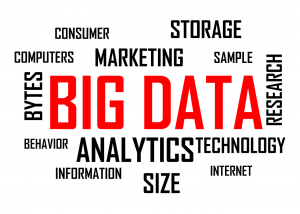
When the Giants Meet: Data Analytics in Insurance Sector

Insurance holds importance as it provides support during times of adversities and uncertainties, dealing directly with the safety of our lives.
But insurance, as a business sector, is of as much importance to our economies as it to those who hold insurance policies. The global insurance industry totaled up to EUR 3.6 trillion (in 2016 alone) (source), with a greater share of emerging markets, and is expected to rise by to a rate ~4% by 2019 (source).
And so in such a highly competitive industry like this a solid grasp over data is critical in building customer loyalty. And the tools to achieve a loyal customer base are :
- Competitive premium pricing,
- Giving value-added benefits to customers, and
- Personalization of services.
But amount and nature of insurance data is such that merely relying on the judgment of underwriters and adjusters won’t help the insurers to harness the real power of their data. And that’s exactly when data analytics is integrated into the insurance business. As it not only help in accumulation of ‘big data’, it helps in providing key competitive insights too.

Comes The Disruption: How Data Analytics Has Affected Insurance World
The operations of an insurer revolve mainly around these basic components:
- Marketing of insurance policies
- Underwriting
- Customer retention
- Claim settlements (adjusting)
- Bypassing fraud claims
- Selling the right kind of policies
The conventional approach to handle these operations had mostly been about:
- relying on agents,
- retrieving data from third parties, and
- human understanding and institution.
But with an advent of data analytics on the horizons of insurance world, a union named as “Insure-tech”, the industry is about to change drastically.
Financial firms are now partnering with tech firms to provide themselves with game changing analytical insights.
“Digital Insurers”now have the advantage of using technology to streamline policy applications and claims, and also to keep premiums low to their advantage.
The three basic advantages that data analytics has provided insures with are:
- Direct marketing
- Churn prediction (the prediction of policy termination before the end date)
- Improvised Risk assessment
By regular analysis of present and potential customer data, provided by modern day third parties (another feat of data science), insurers today now the answers to:
- What kind of policies and people they would benefit with (taking themselves out from the pit of ‘cold calling’)?
- What customers would leave them before or after termination of policy term (with the reasons too)?
- What should the right premium plan for a given customer?

What’s Different: How Data Analytics is Applied in Insurance
In USA alone, 27.6 million (in 2016) people remained uninsured, for different reasons (source). And though the above numbers have dwindled in the years that followed, it’s a no brainer that insurance industry has a huge market
But before it comes to getting these people insured with ‘right plans’ (a problem yet again solved by data analytics), insures first have the need to get hold of the information of these people. And to achieve such target, insurers have till now relied mostly upon third-party data and external providers, for information (such as motor vehicle records and credit reports), to perform underwriting operations.
What’s different today, thanks to data science, is that there are now significantly more data types and data sources. And on any given day, insurance data scientists may gather data from:
- Telematic devices :- For recording driving habits of customers to perform risk assessment while giving car and life insurance
- Government statistics :- Like police records and right identifications to prevent policy relating frauds
- Social media:- To capture the mindsets and interests of customers
- CCTV footage :- To monitor possible committed crimes or ill practices to claim insurance
- Website analytics:- To understand the sentiments and psychology of potential and existing customers
- Satellite data:- To monitor real- time positioning of potential and existing customer
- Smart phones :- To monitor daily habits and preferences of customer
- Credit reports:- To monitor financial habits and conditions of customers), etc.
Much of the information generated from such sources is available for purchase, helping insurers to obtain significantly more information about their present and potential clients to perform assessments and hence improve their services accordingly.
Reaping the Right: Benefits of Data Analytics in Insurance Sector

Ranging from providing an OTI ( One-Time Insurance policy) to spotting a potential fraudulent customer, applying data science and analytics to insurance practices could help insurers in making beneficial decisions for themselves, and for customers too. Here are the top benefits of taking the ‘big data’ route for an insurance business:
1. Customer Retention
When a policy reaches maturity, and dividends are to be paid back to the customers (depending upon the plan), much of the money flows out of the organization, while the customers may choose to reinvest the money elsewhere. But Data analytics can help insurers to know which policies are reaching maturity and where exactly would these customers be interested in reinvesting.
2.Customer Centrist
Customers look to their insurers for recommendation of best suited product for them, but in an absence of a 3600 view of customers, due to the highly-fragmented nature of data, nothing comes to the right conclusion. But through data analytics, ‘Intelligent insurance management’ platforms can be prepared to combine customer data and product information into a cohesive knowledge base to leverage smart recommendation algorithms to gain purposeful knowledge of customer needs.
3. Premium Pricing
Insurance companies rely on something called “The Law of Large Numbers” to make statistical predictions of insurable events, and decide upon the premium price. Such law may work well for the agent, but not so well for a policyholder. For, in case of car insurance, a good driver might end up being lumped in with a bunch of bad drivers, and they’ll all be charged the same premium for their policy. But with Data analytics in place, companies can obtain information from which they can calculate the safety levels for driving in the buyer’s vicinity and his past driving records. The insurer can also monitor driving habits of the customer over time, by telematic devices, to re-price policy premiums so the policyholder pays a fair premium for coverage.
4. Customer Security
Insurers can encourage policyholders to wear smart gadgets ( smart watch or health bands) linked to databases that transmit health information from the wearers to the insurers database. This could help insurers in gaining actionable intelligence on an individual policyholder, and then in warning the insured individual about an impending illness or disease. And if alerting is not feasible, companies can increase the premium and offer coverage accordingly. Taking such steps make users to feel secure about themselves when under a life insurance.
5. Direct Marketing
Using Data analytics can help insurance agencies to have accurate information at their disposal, which can help them automate the process of making smart recommendations to potential customers, at the right moment, or in assisting the existing customers while they are buying a new policy, or making changes to an existing one.
6. Preventing Policy Frauds
One out of 10 insurance claims is fraudulent. Actionable intelligence from Data Analytics can be used to automatically halt the policy claiming process and in initiating an investigation against the customer who has a history of false claims, as soon as the system detects that a claim is being made by such a person.
7. Subjugation
Even the best subrogation professionals can’t do anything about claims that they never get to see. Overworked claims handlers can miss opportunities that should have been referred, and hence Opportunities for ‘subro’ often get lost in the sheer volume of data – most of it in the form of police records, adjuster notes and medical records. But Text analytics searches through this unstructured data to find phrases that typically indicate a subrogation case can help pinpointing such an opportunities earlier, helping insurers in maximizing loss recovery, while reducing loss expenses.
8. Litigation
An insurer goes through a significant loss defending disputed claims. Data analytics can be used in such cases to calculate a litigation propensity score to determine which claims are more likely to result in litigation. Senior adjusters, who are more likely to be able to settle such claims, can then be assigned.
9. Claim Settlements
Analytics can shorten claims cycle times for higher customer satisfaction and reduced labor costs, by assigning specialized adjusters to such claims, and providing them with enough and accurate information. It ensures, for instance in case of auto insurance, in significant savings on things such as rental cars.
What The future Holds
Success of insurance companies depends mainly upon its two wings (not taking anything away from policy sellers), and they are its underwriting department and policy adjusters. So adding analytics to the claims life cycle will not only help the above mentioned personnel to be more resource full while aggregating policies and claims more successfully, but will always do wonders in delivering a measurable ROI with cost savings. Insurers have always been having troves of customer data, but by accepting the new age data provided by IOT industry, and by performing proper analysis in response, insurance industry will only benefit with a more accurate, fair, and convenient way to deal insurance.
